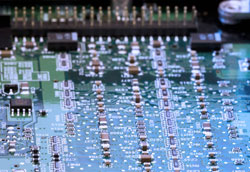Critical challenges for micro-electro-mechanical systems
Micro-electro-mechanical systems (MEMS), although built using semiconductor technologies, are not integrated circuits and demonstrate a different set of failure mechanisms and reliability concerns. Reliability concerns for these very small devices combining mechanical components, micro-sensors, micro-actuators and electrics on a common silicon-based substrate focus on mechanical, rather than electrical failure modes. The HYDROSURF project, which was partly financed by the European Union, aimed to reduce or eliminate adhesion-related phenomena during fabrication of MEMS devices, responsible for their limited lifetime. Due to their high surface area-to-volume ration and surface smoothness of their micro-machined structures of most micro-mechanical devices, strong static friction and adhesion forces can be developed. The magnitude of these interfacial forces is sufficient to deform and attract these structures to the substrate, causing the device's failure. Chemists, microsystems engineers and manufacturers collaborated with Original Equipment Manufacturer costumers to successfully hydrophobise the microstructures' surface by coating them with a self-assembled monolayer and abate deleterious effects of adhesion. Since liquid-phase monolayer deposition is accompanied by the production of large amounts of environmentally hazardous waste (including heptane), research efforts focused on the implementation of a vapour phase coating process. For the surface characterisation of the self-assembled monolayer (SAM), dedicated contact angle measurement tools were developed by engineers at the Technical University of Denmark. Wafer-shaped substrates of different materials, such as silicon, sapphire, quartz and pyrex, were coated with dedicated test SAM layers to evaluate the accuracy of measuring contact angles, which reached 0.1o. In combination with suitable surface treatment, contact angle measurements can lead to the optimum coating process recipes for the industrial application of self-assembled monolayers, specifically designed for MEMS's micro-components.



